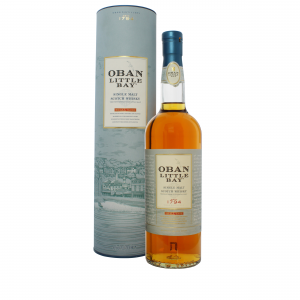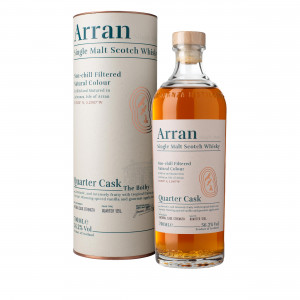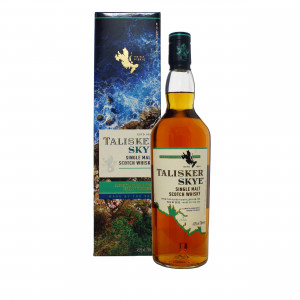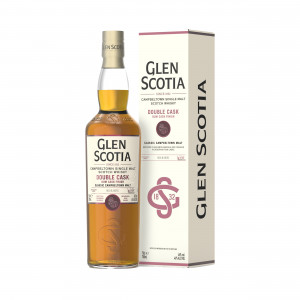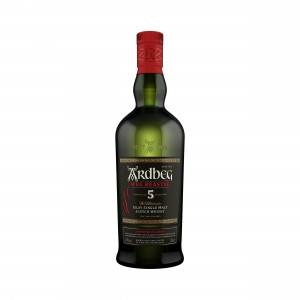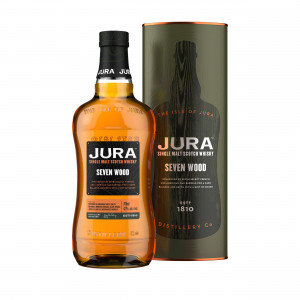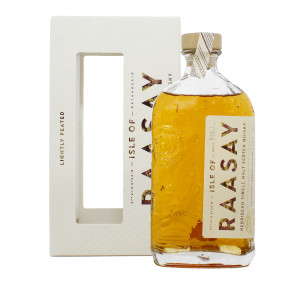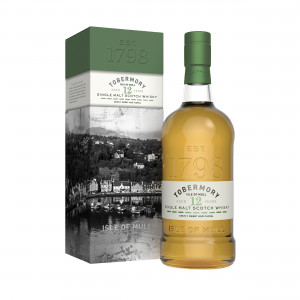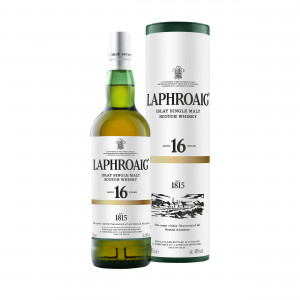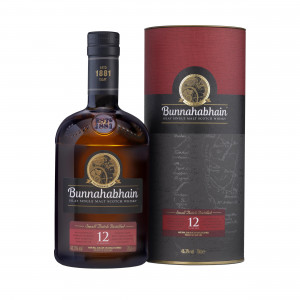West Coast and Islands Highlights
Oban
One of the oldest active distilleries in Scotland, Oban distillery actually predates the town of Oban itself, located on the West Coast. Given its firm presence in the single malt world, many are surprised to learn that Oban is also one of the smallest distilleries in Scotland, with the cult favourite whisky being made by only seven people! Their liquid is known for flavours of orange, smoke, sea salt and honey, although the team prefer to say that its whisky 'speaks for itself.'
Arran
Located on the north of the little island off the West coast of Scotland, Arran distillery is one of the few remaining independent distilleries in the country. On its site in Lochranza, the water is of the purest quality, as it is purified from granite and softened by peat on it's journey from mountain peaks into nearby Loch na Davie. Arran Distillery also only uses traditional methods in the production of its whisky. The spirit is matured in earth floored warehouses, where the influence of the clear mountain air and warm Gulf Stream breeze is evident in the resulting dram, along with flavours of sweet malt, vanilla and apple.
Talisker
Before the recently built Torabhaig distillery, Talisker was the only distillery on Skye since 1830. Despite having a capacity of just over 2 million litres annually, Talisker sells around 100,000 cases each year and is one of the most popular single malt brands in the UK. Whisky fans who have a penchant for rugged and peaty flavours are lovers of Talisker - indeed Pierce Brosnan's Bond was a fan! The distillery is in fact a major tourist attraction and owner Diageo’s most-visited distillery. Considering the effort that it takes to get to this remote western part of Skye, that is in itself quite an achievement!
Glen Scotia
Chosen as Scotland's Distillery of the Year 2021, Glen Scotia is located in Campbeltown, on the Kintyre Peninsula. Previously the whisky capital of the world, the region is now home to only two distilleries - Glen Scotia and Springbank. Ensuring the traditions of Campbeltown whisky production are kept alive, the distilling and blending team at Glen Scotia keep to the distillery's roots, using only locally grown Scottish malt barley and the original fermenters and stillroom dating back to the 1830s. With peated and unpeated expressions, Glen Scotia is principally known for flavours of fruit, vanilla, sea salt and oak.
Ardbeg
Lying alone in a small cove off the Islay South coast is the Ardbeg distillery: a quintessential Islay malt. Ardbeg is one of the nine active distilleries on the island of Islay. Typically, these whiskies are smoky, peaty and complex, and Ardbeg blends these qualities with a distinctive citrusy sweetness. Founded in 1815, they have been producing whisky for over 200 years and is the first whisky to go to space. 20 vials of Ardbeg and wood particles were sent to the International Space Station in 2011 to see how this would impact the maturation process. Did they taste space-y?
Jura
Jura distillery is located on the island of the same name, neighbouring the Caol Ila stretch of water, which runs between the island and Islay. Despite the closeness to Islay, Jura whisky is not renowned for the intense smoky and peaty flavours of its neighbour, due to its different distilling techniques, and is instead known for vanilla, tropical fruits and honey flavours. George Orwell famously visited the island to write his novel 1984 and this was celebrated with the release of a special edition 30 year old expression in 2014.
Isle of Raasay
Isle of Raasay Distillery was founded in 2016 as the first legal distillery on the Hebridean Isle of Raasay. The magical Isle of Raasay lies off the West coast of Scotland in the Inner Hebrides, separated from the Isle of Skye by a short 25 minute ferry journey. Their small batch, handmade expressions are made using Scottish barley malted with Highland peat and matured in a combination of rye whiskey, Chinkapin oak, and first-fill Bordeaux red wine casks. The result is complex flavours of dark berries, peat, and sandalwood.
Tobermory
As bright and colourful as its famous location and namesake, Tobermory craft fruity and fresh single malt whisky. Established in 1798, Tobermory distillery finds its home in the Hebridean capital of the Isle of Mull. Founded in 1798 by John Sinclair, a local kelp merchant, Tobermory was formally known of Ledaig. After making its mark on the island for over a hundred years, the Great Depression forced the distillery to close. Distell recently purchased the distillery and, provided much needed maintenance and renovation for a renewed opening in 2019. Their unpeated signature expressions are known for flavours of orange, mixed spice and salted caramel.
Laphroaig
The Laphroaig distillery was founded in way back in 1810 and is located on the southern tip of Islay in Scotland. The single malt is known the world over for their smoky, medicinal and peaty character, which is partly due to the high moss content in the peat from the surrounding coastline. The distillery is a favourite of royalty, as none other than King Charles is partial to a Laphroaig - and he provided them with a Royal Warrant in 1994. However, not everyone is a fan - Laphroaig was sold in America during Prohibition for medical purposes because the Surgeon General refused to believe that it could be drunk for pleasure! As if!
Bunnahabhain
Bunnahabhain, (pronounced boo-na-haven) was founded in 1881, and is known as the most smooth and easy-drinking Islay malts. This light and delicate character can be attributed to the distillery's remote location, which has become iconic as one of the most beautiful distilleries in Scotland. The Margadale River is the water source for this whisky, which rises through limestone and travels to the distillery through a pipeline, to avoid collecting the Islay peatiness. The liquid instead has sweet and spicy flavours of salted caramel, almonds and nutmeg, with a hint of sea spray.

 4.8/5 with 3,400+ reviews
4.8/5 with 3,400+ reviews
